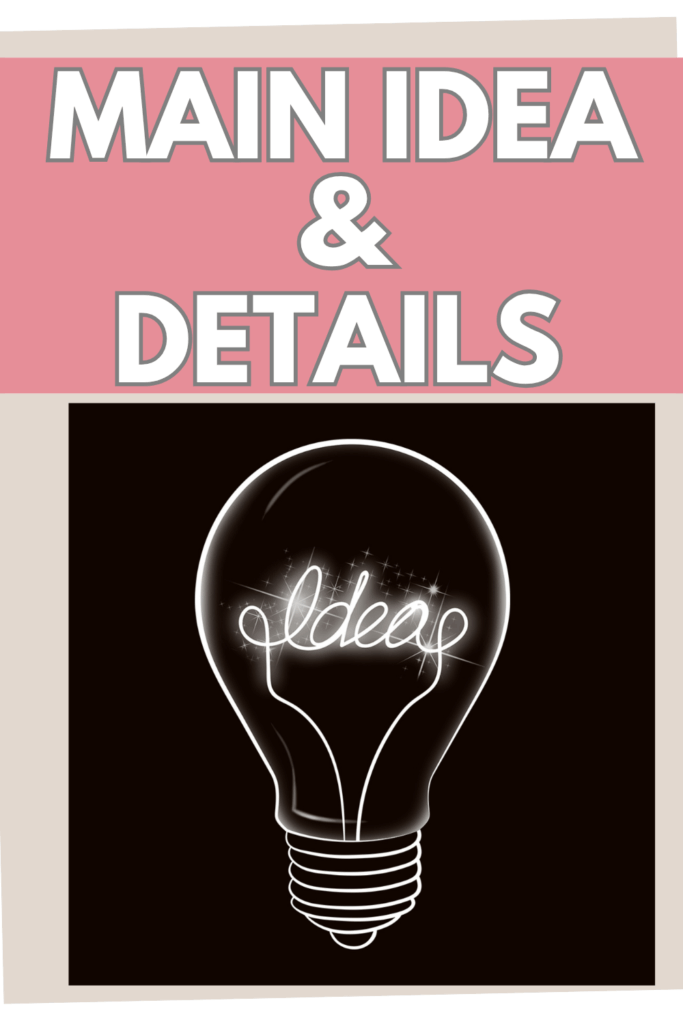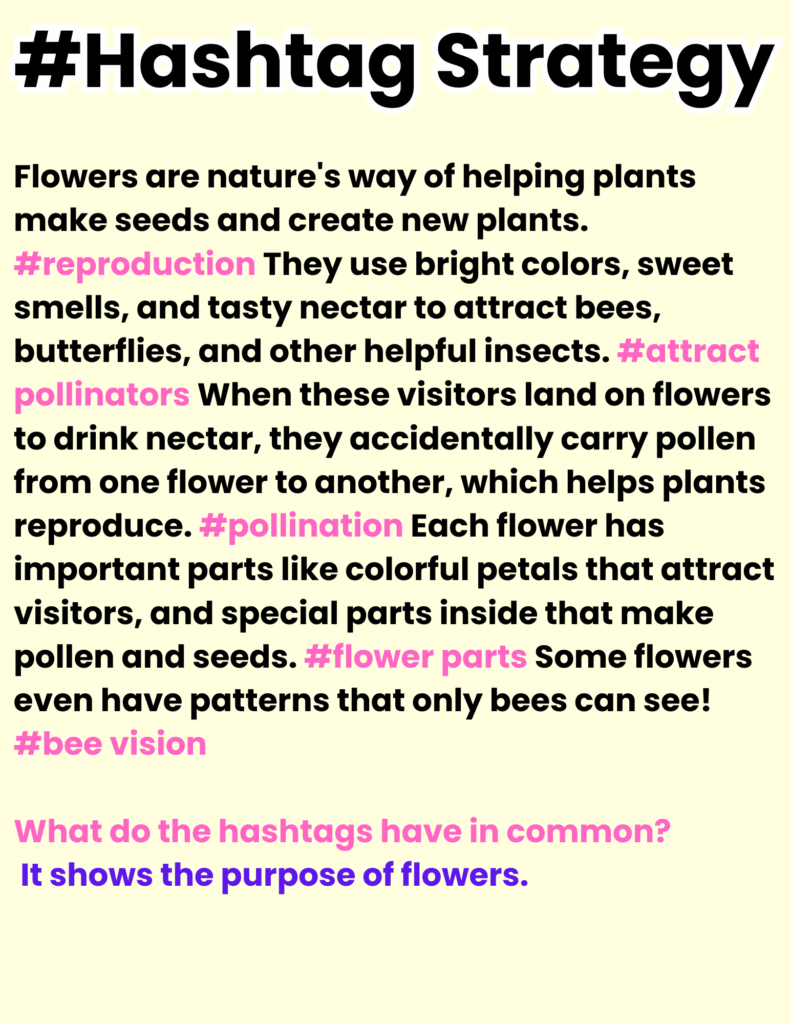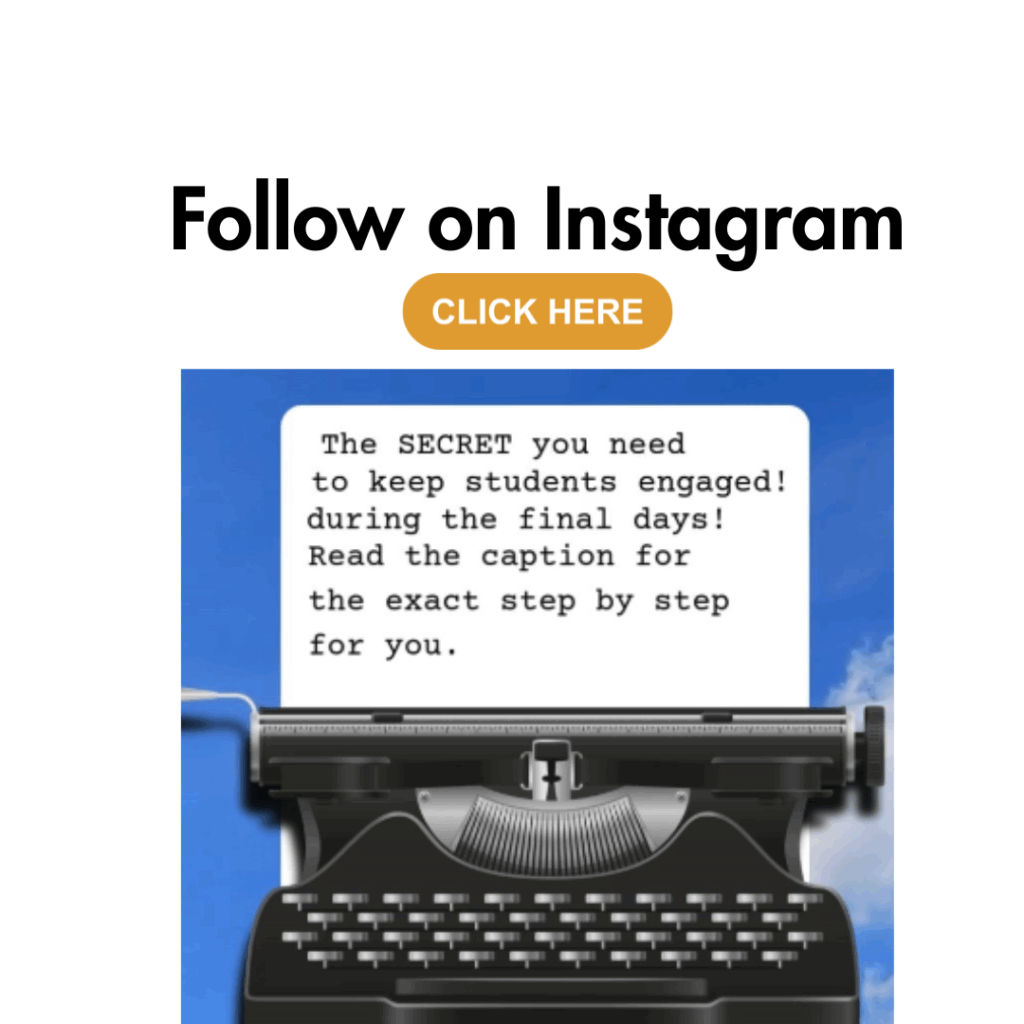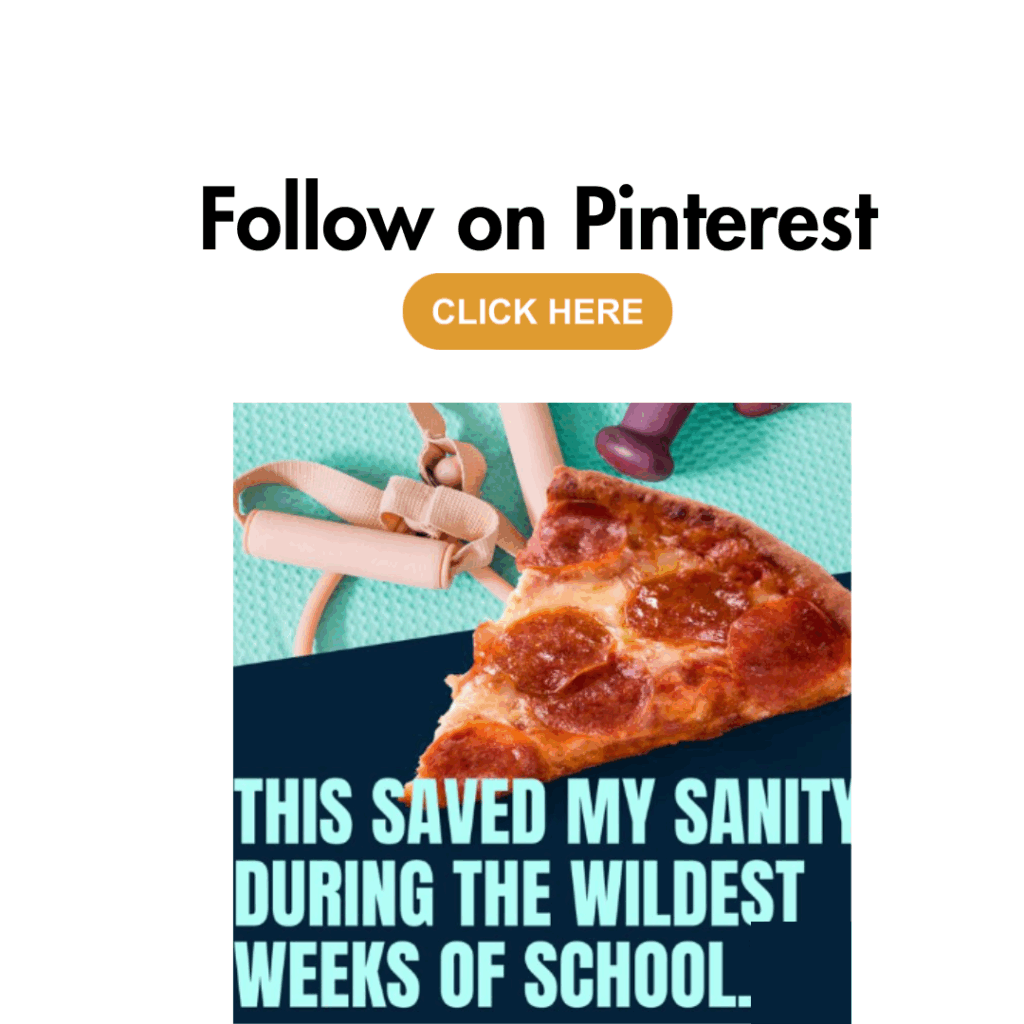Last updated on June 13th, 2025 at 07:20 pm
Teaching the main idea and supporting details can feel like you are chasing your tail. Students often latch onto interesting facts without zooming out to see the main point or just copy the title of the text. Whether you’re diving into a textbook chapter, magazine article, or a nonfiction text, helping kids identify the main idea of a paragraph and the details of a text is foundational for solid reading comprehension. In this post, you’ll get lesson plans, anchor charts, graphic organizers, and classroom-friendly tips to teach this skill.

How Do I Teach Main Idea and Supporting Details?
Start with a mini lesson using a short informational text or section of a chapter. Display the text on your interactive whiteboard and model how to find the main idea using one of the following strategies.
# HASHTAG METHOD
Start by drilling down sentence by sentence in a paragraph. This is what I call the hashtag method, and it is a great visual.
You take each sentence and hashtag the main point of that sentence. After hash tagging, the students can see either a main word being repeated or commonalities among the words. This is the main idea.
After modeling the hashtag method as a class, have students practice with a partner using a new paragraph. One student reads aloud, while the other hashtags the sentence on a sticky note. Then they switch.
Step-by-step process:
Use these words to craft the main idea statement.
- Read the paragraph together as a class
- Go through each sentence one at a time
- Ask students: “What is this sentence mainly about?”
- Write the hashtag word(s) on the board next to each sentence
- Look for patterns – which words appear multiple times or are related?
- Use these words to write the main idea statement
Try this method again with a paragraph about animal habitats or The Boston Tea Party. By practicing across content areas, students begin to see how main idea and details show up everywhere, and it’s not just a “reading thing.”

📋Graphic Organizer
Introduce a graphic organizer that includes boxes for the main idea statement and key details. Provide index cards with jumbled supporting facts, and ask students to match them with the correct main topic.
You can even differentiate by offering different versions. For students needing extra support, provide a word bank or visual main idea anchor chart for reference. For English language learners, offer sentence stems like “This is mostly about…” or “The details tell me…”.
Use interactive whiteboards to drag and drop supporting details into the correct category as a class warm-up or exit ticket.

✍️Color Coding
Reinforce the skill by reading nonfiction texts aloud and having students highlight supporting ideas with different colors. For example:
- Blue for the topic sentence
- Green for key details
- Yellow for minor details
Want to take this further? Have students create their own nonfiction posters on a topic of their choice, using color-coded sticky notes or highlighters. One color for topic sentence, another for key details, and a third for minor details. Display them on a bulletin board for an interactive main idea wall and a quick formative assessment.
This strategy gives visual learners a better way to organize their thinking, especially when tackling informational text. Extend this by having students create color-coded posters in small groups, matching their own nonfiction writing to this system.
Grab these Main Idea and Supporting Details Worksheets on TPT to save time!
📝 THE SUMMARY METHOD
After students identify the main idea, have them write a 2-3 sentence summary. This reinforces their understanding and helps them distinguish between the main idea and less important details.
Use sentence stems like:
- The most important point is…
- Three details that support this are…
- This paragraph is mostly about…
❓ QUESTION-ANSWER STRATEGY
Teach students to turn the main idea into a question, then find supporting details that answer it. For example: How do rollercoasters work? leads to details about physics, safety, and features.
Create a list of question stems like:
- Why is _ important?
- How does _ work?
- What happens when _?
This method can double as a writing warm-up. Have students take their main idea question and write an informational paragraph answering it with three clear supporting details. This builds paragraph structure and strengthens their understanding of concluding sentences and main arguments.
🕵️ MAIN IDEA DETECTIVE GAME
Create a classroom game where students become detectives searching for clues (supporting details) to solve the case (main idea). This gamification increases engagement.
How to set it up:
- Give students clue cards with facts
- Have them sort into categories and name the main idea
- Reward points for correct matches
- Use this in centers or as a review activity
Extend the game by having students create their own detective paragraphs to swap and solve with a partner.
🔍 TEXT FEATURE HUNT
Show students how headings, subheadings, bold words, and captions often reveal main ideas before they even read the full text.
Different Ways to Teach Main Idea Across Subjects
- In Reading: Use books like Just Ask!: Be Different, Be Brave, Be You by Sonia Sotomayor to pull main ideas from each page
- In Science: Pull from experiments or diagrams and ask what the process or topic is mainly about
- In Social Studies: Read short historical passages and summarize the central idea of the event.
📊ANCHOR CHARTS AND VISUAL AIDS
- Umbrella analogy (Main Idea covers all the details)
- Cupcake metaphor (Main idea is the flavor, details are the frosting)
- Flowchart with topic > main idea > supporting details
After introducing classroom charts, let students make their own in small groups. Assign each group a metaphor (like umbrella or cupcake) and have them create a chart explaining main ideas and supporting details with visuals, definitions, and examples. Post these around the room as reference tools for reading comprehension.
📌REVIEW AND SPIRAL STRATEGIES
Don’t let this skill be a one-and-done. Add quick main idea checks to your bell ringers, morning work, or spiral review. Use exit tickets like “What was today’s most important thing we learned?” or “What’s the main idea of this lesson?”
What’s the Difference Between a Central Idea and a Supporting Detail?
Think of a paragraph like a cupcake. 🧁
The central or main idea is the flavor of the cupcake—chocolate, vanilla, red velvet. It’s the main thing you taste, the reason the cupcake exists. It’s the big picture that ties everything together.
The supporting details are the frosting, sprinkles, and filling. They make the flavor stronger and more interesting, but they aren’t the whole cupcake. These are the facts, examples, and descriptions that help explain or prove the flavor.
If you just have frosting and sprinkles with no cake, there’s no real substance. And if you have plain cake with nothing else, it might be harder to recognize what flavor it’s supposed to be. Everything works together to build the flavor.
Common Student Mistakes and Solutions
❌ Mistake 1: Choosing a Detail Instead of the Main Idea
Solution: 🌂 Teach the umbrella test. The main idea should be broad enough to cover all the details, like an umbrella covering everything underneath.
❌ Mistake 2: Making the Main Idea Too Broad
Solution: 🐻 Help students find the Goldilocks main idea. It’s not too specific, not too general, but just right for that particular text.
❌ Mistake 3: Copying the First or Last Sentence
Solution: 💭 Explain that while topic sentences often contain the main idea, students need to put it in their own words to show understanding.
❌ Mistake 4: Not Checking for Understanding
Solution: 🖍️ Use exit tickets, student-created paragraphs, rubrics, or self-assessments.
What Is an Example of Supporting Details and Main Idea?
Let’s break it down into chunks using a single paragraph.
Rollercoasters are amazing machines that use physics to create thrilling rides. When the coaster climbs to the top of the first hill, it stores potential energy, like a battery charging up. As it rushes down, that stored energy changes into kinetic energy, which is the energy of motion. This gives riders the exciting feeling of speed and weightlessness. Engineers design rollercoasters very carefully to make sure they are safe while still being fun. They test every part hundreds of times before letting people ride. Modern rollercoasters can reach speeds over 100 miles per hour and include loops, corkscrews, and sudden drops that make your stomach flip!
Step 1: Hashtag Method:
Go sentence by sentence and hashtag the main point:
- Rollercoasters are amazing machines that use physics to create thrilling rides. #physics
- When the coaster climbs to the top of the first hill, it stores potential energy, like a battery charging up. #potential energy
- As it rushes down, that stored energy changes into kinetic energy, which is the energy of motion. #kinetic energy
- This gives riders the exciting feeling of speed and weightlessness. #exciting feelings
- Engineers design rollercoasters very carefully to make sure they are safe while still being fun. #engineering #safety
- They test every part hundreds of times before letting people ride. #testing
- Modern rollercoasters can reach speeds over 100 miles per hour and include loops, corkscrews, and sudden drops that make your stomach flip! #speed
Step 2: Identify the Main Idea
Guide students to combine the hashtags: Rollercoasters use physics and careful engineering to create safe, thrilling rides.
Step 3: Color Coding Activity
Have students highlight:
- Yellow: Main idea (sentence 1)
- Green: Physics explanation (sentences 2-4)
- Blue: Safety/engineering details (sentences 5-6)
- Orange: Exciting features (sentence 7)
Step 4: Supporting Details Graphic Organizer
Main Idea: Rollercoasters use physics and engineering to create thrilling, safe rides
- Supporting Detail 1: How physics works
- Supporting Detail 2: Safety through engineering
- Supporting Detail 3: Exciting features
Step 5: Practice Questions
Ask students:
- What is this paragraph mostly about?
- Which sentences tell us HOW rollercoasters work?
- Which sentences tell us about SAFETY?
- If you had to tell a friend about this in one sentence, what would you say?
Conclusion: The Main Thing to Remember
Teaching the main idea of a text is all about guiding students to think bigger than the details and notice the message behind them. Using tools like anchor charts, lesson plans, interactive whiteboards, and graphic organizers ensures that this concept isn’t just introduced but truly mastered. When students can clearly explain the main ideas of a text and back them up with supporting details, their reading comprehension soars.
Grab ready-to-use Main Idea and Supporting Details Worksheets to simplify your next mini lesson!
Additional Resources to Add to Your Toolbox

Favorite Amazon Items to Support Teaching Main Idea
This post may contain affiliate links, which means I may receive a small commission if you make a purchase through the link—at no extra cost to you. I only recommend products I truly love and believe will add value to your teaching!
- Post-it Chart Paper for anchor charts
- Dry Erase Pockets for reusable card sorts
- Magnetic Sentence Strips for sentence mapping on whiteboards

